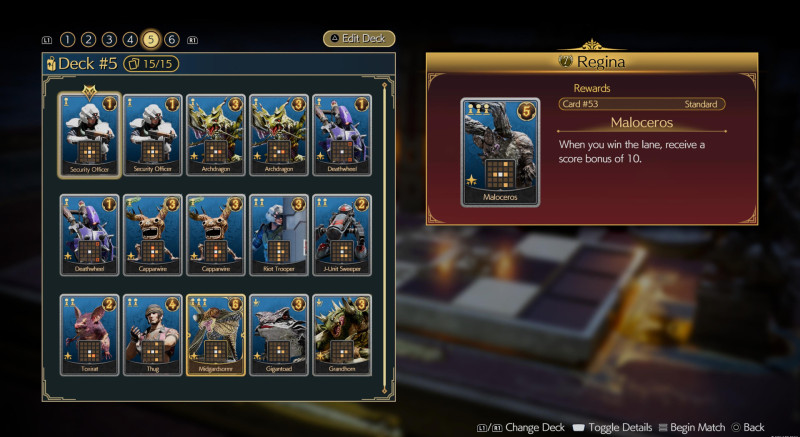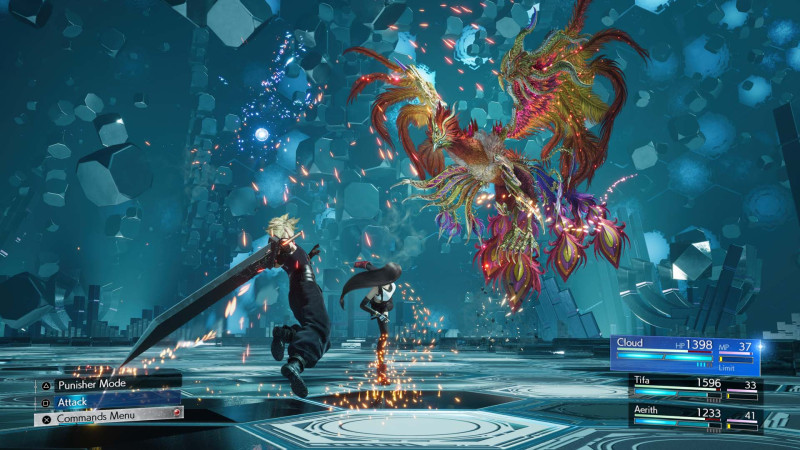Sony Interactive Entertainment has announced layoffs at various PlayStation first-party studios, including Insomniac Games (Marvel’s Spider-Man), Naughty Dog (The Last of Us Part II), Guerrilla Games (Horizon Forbidden West), and Firesprite. It is also closing London Studio, the team behind PlayStation VR’s Blood & Truth and VR Worlds. In a statement released by head of PlayStation Studios Hermen Hulst, he seems to cite overgrowth as the reason for the layoffs.
PlayStation’s Technology, Creative, and Support teams are also affected by these layoffs, according to Hulst. He writes, “These are in addition to some smaller reductions in other teams across PlayStation Studios.” These layoffs will result in an 8 percent reduction of staff, or around 900 people losing their jobs.
[embedded content]
“Our goal at PlayStation Studios has always been to make the best games for PlayStation fans, and our global community of studios represent some of the most creative and talented teams within the gaming industry,” Hulst writes in the statement. “PlayStation 5 is in its fourth year, and we are at a stage where we need to step back and look at what our business needs. At the same time, our industry has experienced continuing and fundamental change which affects how we all create, and play, games.
“Delivering the immersive, narrative-driven stories that PlayStation Studios is known for, at the quality bar that we aspire to, requires a re-evaluation of how we operate. Delivering and sustaining social, online experiences – allowing PlayStation gamers to explore our worlds in different ways – as well as launching games on additional devices such as PC and Mobile, requires a different approach and different resources. To take on these challenges, PlayStation Studios had to grow.”
He continues, stating that growth itself is not an ambition, likely alluding to overgrowth within PlayStation Studios as a reason for today’s layoffs.
Hulst says PlayStation has looked at its studios and portfolio to evaluate projects in various stages of development and has decided that some of these projects will not move forward.
[embedded content]
“I want to be clear that the decision to stop work on these projects is not a reflection on the talent or passion of team members,” Hulst writes. “Our philosophy has always been to allow creative experimentation. Sometimes, great ideas don’t become great games. Sometimes, a project is started with the best intentions before shifts within the market or industry result in a change of plan. I am deeply saddened to see individuals leave the company. I have so much admiration, appreciation, and respect for their work.
“PlayStation Studios will continue to be a creator-led organization driven by evolving our beloved franchises and bringing new gameplay experiences of the highest quality to our fans.”
Alongside today’s news, Sony Interactive Entertainment president and CEO Jim Ryan, who is departing from the company this spring, released the email he sent to PlayStation alongside today’s layoff news. Here is that email, and the preceding statement, in full:
Statement:
The PlayStation community means everything to us, so I felt it was important to update you on a difficult day at our company. We have made the extremely hard decision to announce our plan to commence a reduction of our overall headcount globally by about 8% or about 900 people, subject to local law and consultation processes. Employees across the globe, including our studios, are impacted.
These are incredibly talented people who have been part of our success, and we are very grateful for their contributions. However, the industry has changed immensely, and we need to future ready ourselves to set the business up for what lies ahead. We need to deliver on expectations from developers and gamers and continue to propel future technology in gaming, so we took a step back to ensure we are set up to continue bringing the best gaming experiences to the community.
Below I’ve shared a copy of the email I sent out to the company this morning to provide more context on our thinking. We deeply appreciate support and understanding from the PlayStation community as these decisions are very difficult. Please rest assured that our plans for reorganizing and streamlining are so we can continue to deliver the best gaming experiences possible.
Email:
“Subject: Important Update Regarding Organizational Restructuring
Team,
It is important to provide you with updates about the business as often as possible. Today, I am writing with sad news. Through discussions over the past few months about the evolving economic landscape, changes in the way we develop, distribute, and launch products, and ensuring our organization is future ready in this rapidly changing industry, we have concluded that tough decisions have become inevitable. The leadership team and I made the incredibly difficult decision to restructure operations, which regrettably includes a reduction in our workforce impacting very talented individuals who have contributed to our success.
After careful consideration and many leadership discussions over several months, it has become clear changes need to be made to continue to grow the business and develop the company. We had to step back, look at our business holistically, and move forward focusing on the long-term sustainability of the company and delivering the best experiences possible for our community. The goal is to streamline our resources to ensure our continued success and ability to deliver experiences gamers and creators have come to expect from us.
I want to be as transparent as possible with you, our partners, and our community about what this means:
- We envision reducing our headcount by about 900 people, or about 8% of our current workforce
- There will be impact for employees across all SIE regions – Americas, EMEA, Japan, and APAC
- Several PlayStation Studios are affected
I know that receiving this news will be hard and unsettling and you are wondering what this means for you. Timelines and procedures for how we approach this will vary based on your location due to local laws and regulations.
- For those of you in the US, all impacted employees will be notified today.
- In the UK, it is proposed:
- That PlayStation Studios’ London Studio will close in its entirety;
- That there will be reductions in Firesprite studio;
- And that there will be reductions in various functions across SIE in the UK.
The proposed changes mean that we will enter a period of collective consultation before any final decisions are taken. All employees who are part of the collective consultation will be made aware of the next steps today.
- In Japan, we will implement a next career support program. Details will be communicated separately.
- In other countries, we will begin conversations with those who are potentially at risk or impacted as a result of this proposed course of action.
For those who will be leaving SIE: You are leaving this company with our deepest respect and appreciation for all your efforts during your tenure.
For those who will be staying at SIE: We will be saying goodbye to friends and colleagues that we cherish during this process, and this will be painful. Your resilience, sensitivity, and adaptiveness will be critical in the weeks and months to come.
This will not be easy, and I am aware of the impact it will have on wellbeing. Affected employees will receive support, including severance benefits. While these are challenging times, it is not indicative of a lack of strength of our company, our brand, or our industry. Our goal is to remain agile and adaptable and to continue to focus on delivering the best gaming experiences possible now and in the future.
Thank you for your understanding during this difficult period. Please be kind to yourselves and to each other.”
These job cuts join a string of other disheartening 2024 layoffs, which total more than 5,600 in just the first two months of the year. Yesterday, we learned Until Dawn developer Supermassive Games is laying off 90 employees.
At the end of January, we learned Embracer Group had canceled a new Deus Ex game in development at Eidos-Montréal and laid off 97 employees in the process. Also in January, Destroy All Humans remake developer Black Forest Games reportedly laid off 50 employees and Microsoft announced it was laying off 1,900 employees across its Xbox, Activision Blizzard, and ZeniMax teams as well. Outriders studio People Can Fly laid off more than 30 employees in January, and League of Legends company Riot Games laid off 530 employees.
We recently learned Lords of the Fallen Publisher CI Games was laying off 10 percent of its staff, that Unity would be laying off 1,800 people by the end of March, and that Twitch had laid off 500 employees.
We also learned that Discord had laid off 170 employees, that layoffs happened at PTW, a support studio that’s worked with companies like Blizzard and Capcom, and that SteamWorld Build company, Thunderful Group, let go of roughly 100 people. Dead by Daylight developer Behaviour Interactive also reportedly laid off 45 people, too.
Last year, more than 10,000 people in the games industry or game-adjacent industries were laid off.
In January of last year, Microsoft laid off 10,000 employees amidst its ongoing $69 billion acquisition of Activision Blizzard, which it completed in October.
Striking Distance Studios, the team behind 2022’s The Callisto Protocol, laid off more than 30 employees in August of 2023. That same month, Mass Effect and Dragon Age developer BioWare laid off 50 employees, including long-time studio veterans. The following month, in September, Immortals of Aveum developer Ascendant Studios laid off roughly 45% of its staff, and Fortnite developer Epic Games laid off 830 employees.
In October of last year, The Last of Us developer Naughty Dog laid off at least 25 employees, and Telltale Games also underwent layoffs, although an actual number of affected employees has not yet been revealed. Dreams developer Media Molecule laid off 20 employees in late October.
In November, Amazon Games laid off 180 staff members, Ubisoft laid off more than 100 employees, Bungie laid off roughly 100 developers, and 505 Games’ parent company, Digital Bros, laid off 30% of its staff.
In December, Embracer Group closed its reformed TimeSplitters studio, Free Radical Design, and earlier in the year, Embracer closed Saints Row developer Volition Games, a studio with more than 30 years of development history. A few weeks before the winter holidays, Dungeons & Dragons and Magic: The Gathering owner Hasbro laid off 1,100 employees.
The games industry will surely feel the effects of such horrific layoffs for years to come. The hearts of the Game Informer staff are with everyone who’s been affected by layoffs or closures.














